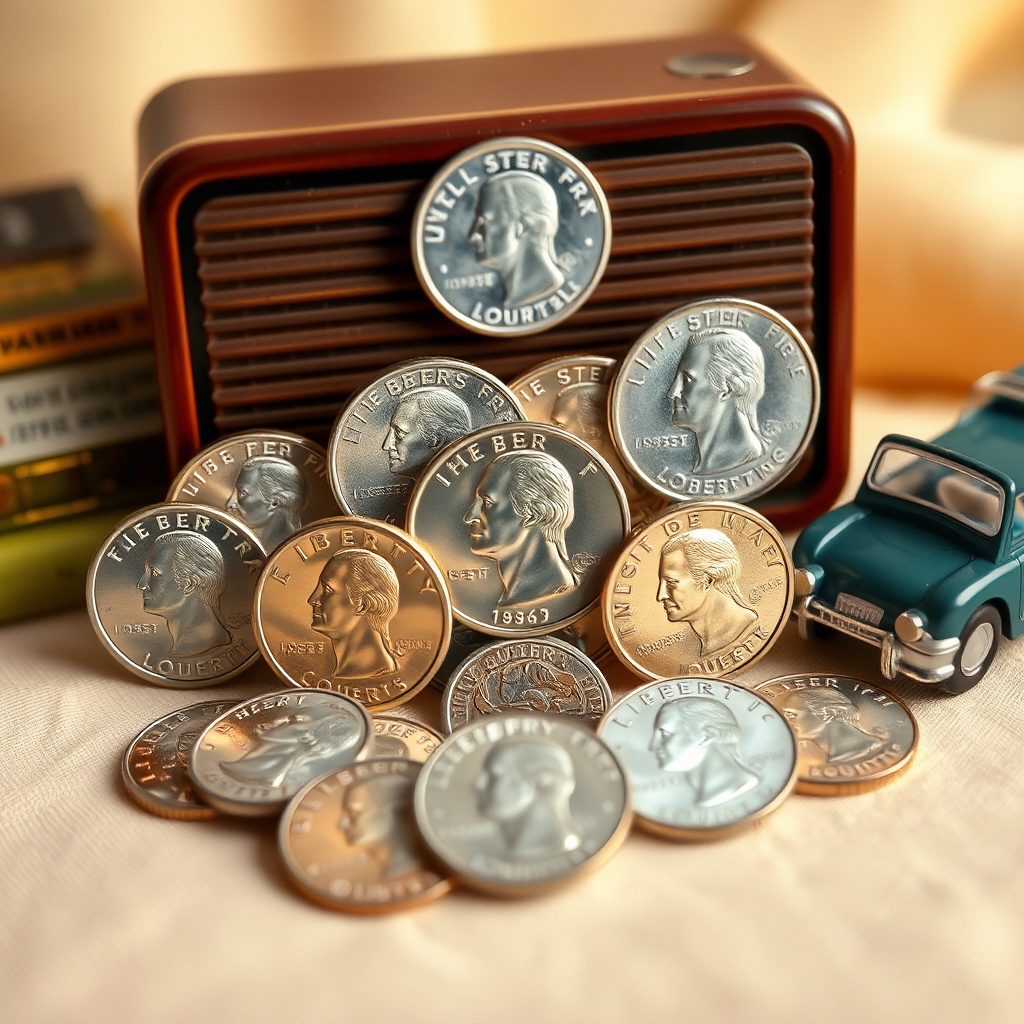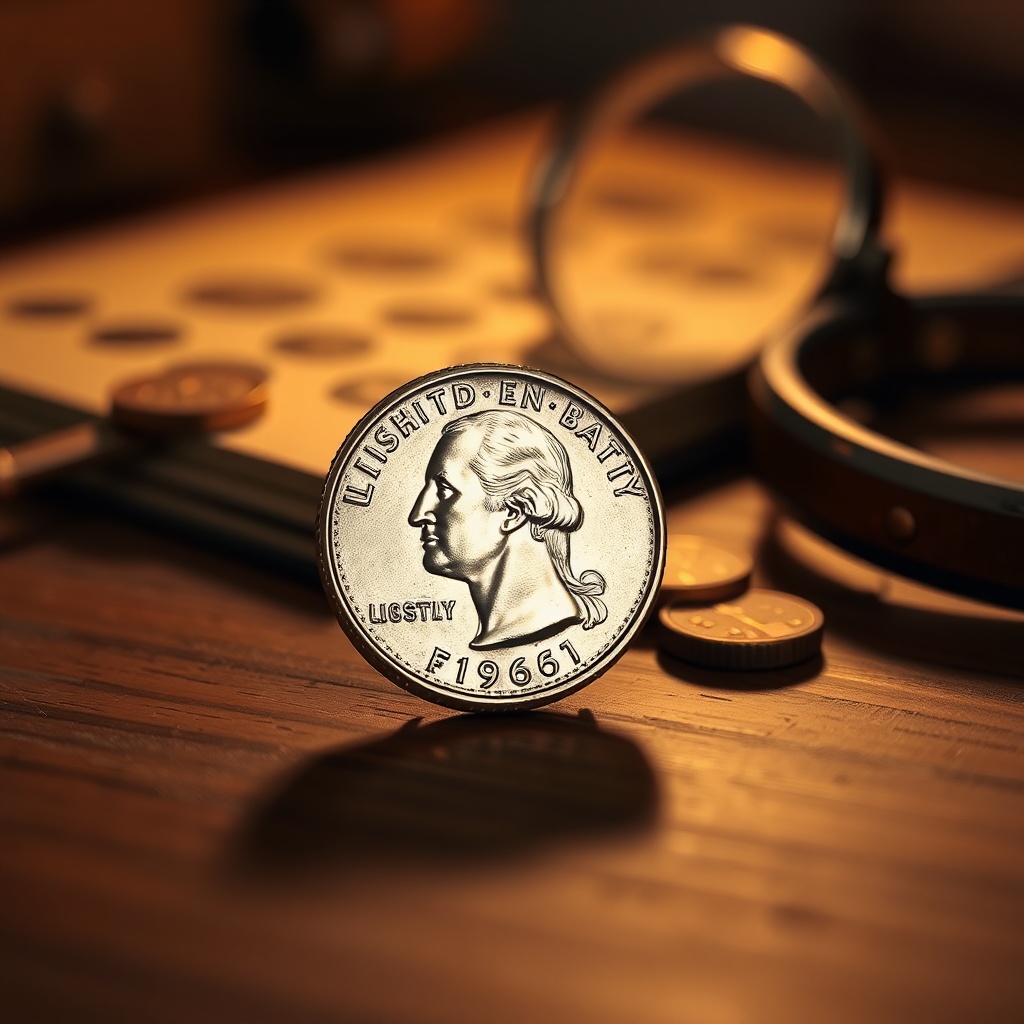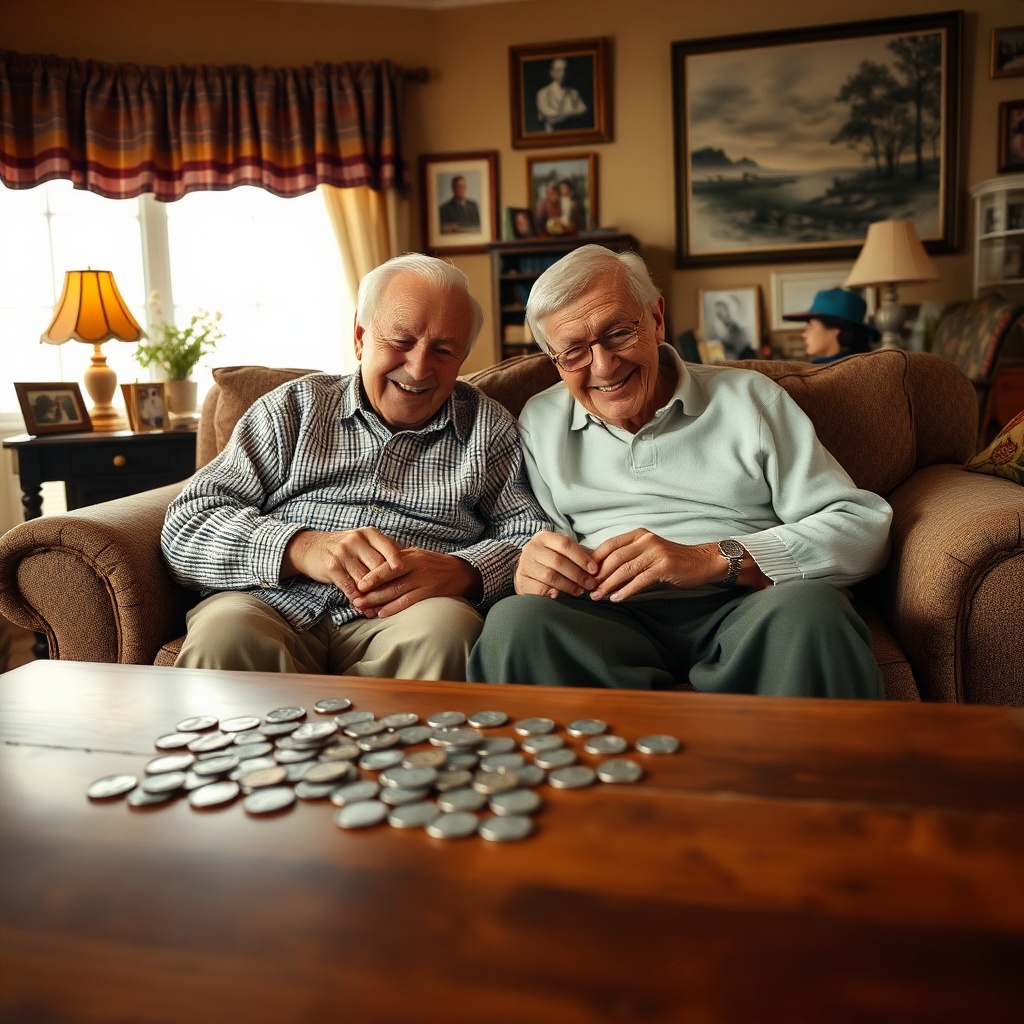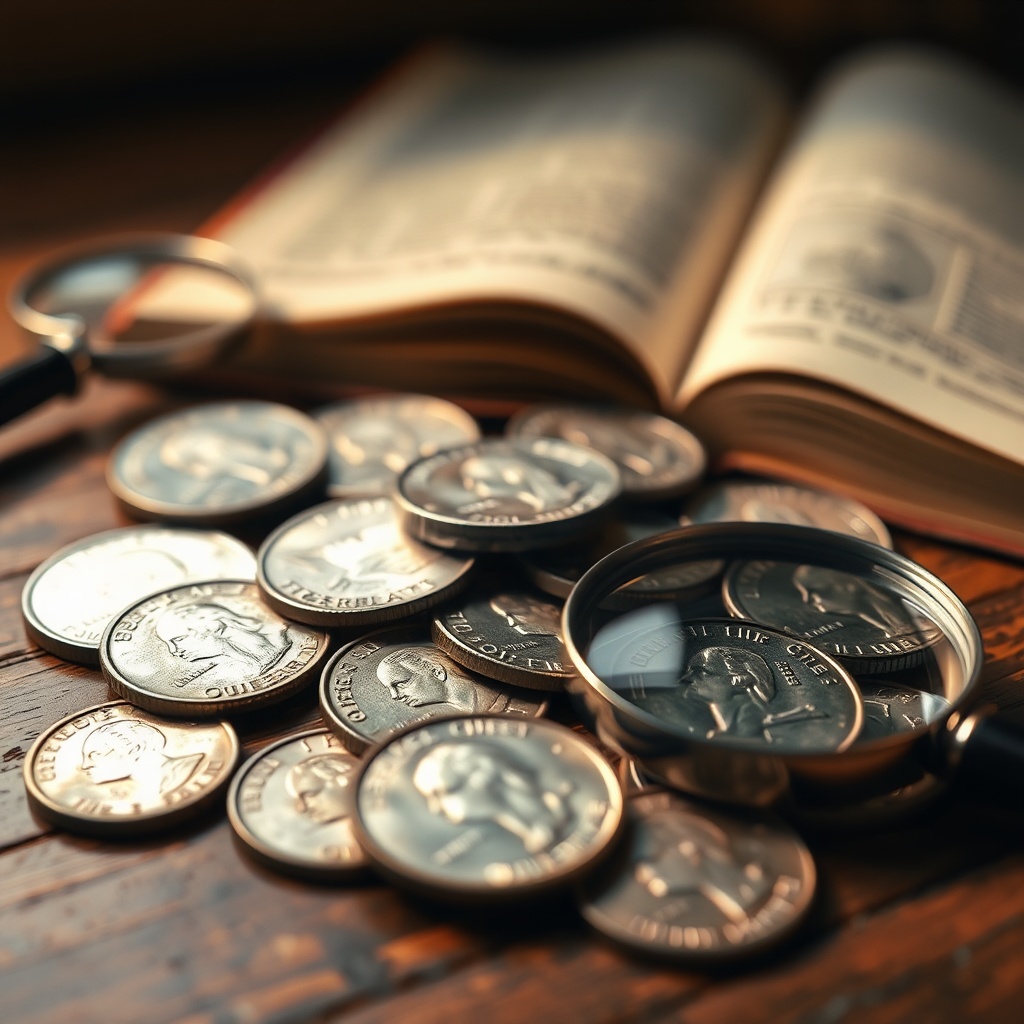Discover the Hidden Wealth: What Makes 1960s Quarters So Special?

Understanding the 1960s Quarters
The 1960s were a transformative decade in American history, and the quarters minted during this period carry stories and value that many may not realize. Have you ever wondered if you have any of these hidden treasures in your change jar? Let’s explore what makes these quarters so special.
The Unique Features of 1960s Quarters
While all quarters share a common design, not all are created equal. Here are some features to look for:
- Mint Marks: Quarters minted in 1965, 1966, and 1967 often feature unique mint marks. Check the back of your quarters for an “D” (Denver) or “S” (San Francisco) mint mark.
- Silver Content: Quarters minted before 1965 are composed of 90% silver. However, the 1964 quarters still hold significant silver value. Have you checked your collection?
- Rare Variations: Some 1960s quarters have rare variations that can be worth significantly more than their face value. Look for the 1965 Special Mint Set which may contain uncirculated versions.
Why Collect 1960s Quarters?
Collecting coins can be a fulfilling hobby, especially for those who appreciate history. Here are some reasons to consider:
- Investment Value: Coins can appreciate over time. Some 1960s quarters have been known to sell for hundreds or even thousands of dollars!
- Historical Significance: Each coin tells a story of the era it was minted. The 1960s were a time of social change, and these quarters are a tangible piece of that history.
- Community and Camaraderie: Joining a coin collecting club can connect you with fellow enthusiasts. Share your finds and learn from each other.
How to Identify Valuable Quarters
Ready to dive into your change collection? Here’s a simple guide:
| Year | Key Features | Potential Value |
|---|---|---|
| 1964 | 90% Silver | Up to $10+ (depending on condition) |
| 1965 | Special Mint Set | $2-5 (uncirculated) |
| 1967 | Rare errors (double dies) | $5-50+ |
Where to Sell Your Quarters
If you discover a valuable quarter, you may be wondering where to sell it. Here are some options:
- Local Coin Dealers: Often the most straightforward option. They can assess your coins and offer immediate cash.
- Online Auctions: Platforms like eBay allow you to reach a broader audience. Just make sure to take clear photos!
- Coin Shows: Attend local shows to connect with collectors and dealers. It’s a fun way to learn more about your coins.
The 1960s quarters may seem ordinary, but they hold the potential for hidden wealth. Take a moment to search through your coins and see what you might uncover. Remember, every quarter tells a part of America’s story, and maybe yours too!
The Art of Coin Collecting: How to Spot a Valuable 1960s Quarter

Understanding the 1960s Quarter
The 1960s was a transformative decade for American coinage. If you have old quarters lying around, you might just be sitting on a hidden treasure. Let’s delve into how to identify these valuable coins!
Key Features of 1960s Quarters
To recognize valuable quarters from this era, keep an eye out for the following:
- Mint Mark: Look for the mint mark on the reverse side of the coin. Is it an “D” for Denver or an “S” for San Francisco? Some mint marks indicate rarity.
- Year of Minting: Pay attention to the specific year. For example, the 1964 quarters are often more sought after due to their silver content.
- Condition: The condition of the coin plays a massive role in its value. Coins that are uncirculated or in mint condition fetch higher prices.
Identifying Valuable Quarters
Here are a few tips to help you spot those gems:
- Check for Errors: Some quarters may have minting errors, such as double strikes or misaligned designs, which can significantly increase their value.
- Silver Content: Quarters minted before 1965 contain 90% silver. If you find a quarter from 1964 or earlier, it’s worth more than its face value!
- Rarity: Research the rarity of specific coins. For instance, a 1965 quarter with a special mint mark can be incredibly valuable.
Steps to Start Your Collection
Ready to dive into the world of coin collecting? Follow these steps:
- Gather Your Supplies: You’ll need coin holders, a magnifying glass, and a reference book on coin values.
- Join a Community: Consider joining a local coin club or online forum. Sharing knowledge and experiences with fellow collectors can be invaluable.
- Document Your Findings: Keep a record of the quarters you find, including details like condition and mint marks. This will help you track their value over time.
Final Thoughts
Coin collecting is not just a hobby; it’s an exciting journey that may lead you to discover valuable treasures hidden in your pocket change. Don’t overlook your old quarters—they could be more than just coins; they might be your ticket to a small fortune!
From Pocket Change to Riches: Real Stories of 1960s Quarter Finds

Have you ever rummaged through your old coins, wondering if there might be something special hiding among your pocket change? The 1960s quarters are particularly fascinating because they hold stories of unexpected wealth and discovery. Let’s explore some real-life stories of individuals who turned their ordinary change into extraordinary riches!
The 1964 Silver Quarter
In 1964, the U.S. Mint produced quarters that were made of 90% silver. This means that if you come across a 1964 quarter, it might be worth more than just 25 cents. One elderly gentleman found a roll of these quarters in his late father’s belongings. After checking their value, he discovered that they were worth over $10 each due to their silver content!
Rare Mint Marks
Have you ever heard of the 1965 quarter with a D mint mark? This particular coin is rare and sought after by collectors. When a retired school teacher decided to go through her coin collection, she found one tucked away in a dusty old jar. After having it appraised, she learned it could fetch up to $4,000! Can you imagine?
Unexpected Finds
Sometimes, these valuable coins can be found in the most unexpected places. Take the story of an elderly couple who were cleaning out their attic. They stumbled upon an old shoebox filled with coins from the 1960s. Among them was a 1969 quarter with a unique error: it was double struck. This small mistake made it worth over $1,500! What treasures might you discover in your own home?
Tips for Finding Valuable Quarters
If you’re inspired by these stories and want to start your own treasure hunt, here are some tips:
Check for silver content. Any quarter dated 1964 or earlier is likely silver.
Look for mint marks. These tiny letters can indicate rarity.
Examine your coins for errors. Mistakes during production can lead to high value.
Turning pocket change into riches is not just a dream; it can be a reality with a little bit of luck and knowledge. So, take a moment to check your coin collection or search through old coins that might have been passed down through generations. You never know what hidden treasures you might find!
Unlocking the Secrets: Understanding the Value of Your 1960s Quarters
Introduction to 1960s Quarters
The 1960s were a dynamic decade in American history, and the quarters minted during this time not only reflect the era but also hold potential value. If you have some quarters from the 1960s lying around, you might be sitting on a hidden treasure!
What Makes a Quarter Valuable?
Several factors contribute to the value of a quarter:
- Rarity: Some years and mint marks produced fewer coins than others.
- Condition: Coins in better condition (like uncirculated coins) fetch higher prices.
- Demand: Collectors often seek particular coins, driving up their value.
Key Dates to Look For
Not all 1960s quarters are created equal. Here are some key dates that collectors often look for:
- 1964: The last year of the 90% silver quarters.
- 1965-1967: These quarters were made of a copper-nickel blend but can still have value if in excellent condition.
- 1968-1970: These years had both Philadelphia and Denver mint marks; check for those!
Identifying Mint Marks
Understanding where your quarter was minted can significantly affect its value. Here’s how to find the mint mark:
- Philadelphia Mint: No mint mark.
- Denver Mint: The letter ‘D’ is present.
- San Francisco Mint: The letter ‘S’ is present.
Assessing the Condition
To evaluate the condition of your quarters, consider the following classifications:
- Uncirculated: No wear, shiny appearance.
- Extremely Fine: Slight wear, but details are still sharp.
- Very Fine: Moderate wear, but major features are visible.
- Good: Heavy wear, but identifiable.
If you believe your quarters have value, here are some places to consider selling:
- Coin Dealers: Local shops can provide appraisals.
- Online Auctions: Websites like eBay allow you to reach a larger audience.
- Coin Shows: Attending local shows can connect you with serious collectors.
Checking your change jar or old coin collection may yield surprising finds! By understanding the specific details about your 1960s quarters, you can unlock their potential value. Remember to keep your quarters safe and consider consulting with a professional for an accurate appraisal.
Join the Hunt: Tips for Finding Rare 1960s Quarters in Your Spare Change
Understanding the Value of 1960s Quarters
The 1960s was a pivotal decade in American history, and it was also a time when some quarters were minted that could hold significant value today. While most quarters from this era are worth just 25 cents, certain rare varieties can be worth much more. Are you ready to dive into your spare change and seek out these hidden treasures?
What Makes a Quarter Rare?
Not all quarters are created equal. Key factors that contribute to a quarter’s rarity include:
Mint Mark: Look for quarters with specific mint marks such as ‘D’ (Denver) or ‘S’ (San Francisco).
Condition: Coins in uncirculated condition are typically more valuable.
Variety: Certain design variations and errors can significantly increase a coin’s worth.
Where to Look for 1960s Quarters
Now that you know what to look for, let’s discuss where you can find these elusive coins:
Change from Purchases: Always check your change after making a purchase. You never know when a rare quarter might slip through!
Coin Rolls: Buying rolls of quarters from your bank can be a treasure hunt. Open them up and check for those valuable coins!
Family and Friends: Ask loved ones if they have any old coins lying around. You might be surprised at what they have to offer!
Tips for Spotting Rare 1960s Quarters
Here are some simple tips to help you identify valuable quarters:
Use a Magnifying Glass: A magnifying glass can help you examine mint marks and details more closely.
Research Online: Websites and forums dedicated to coin collecting can provide valuable information about what to look for.
Join a Local Coin Club: Being part of a community of collectors can enhance your knowledge and increase your chances of finding rare coins.
Storing Your Treasures
Once you start finding these quarters, it’s essential to store them properly:
Use Coin Holders: Invest in holders or albums designed for coins to keep them in pristine condition.
Keep Them Safe: Consider a safe deposit box or a secure location at home for your most valuable finds.
Enjoy the Journey
Finding rare 1960s quarters can be an exciting and rewarding hobby. Remember to enjoy the journey, whether you’re sifting through change or connecting with fellow enthusiasts. Happy hunting, and may you uncover treasures that could change your fortune!
